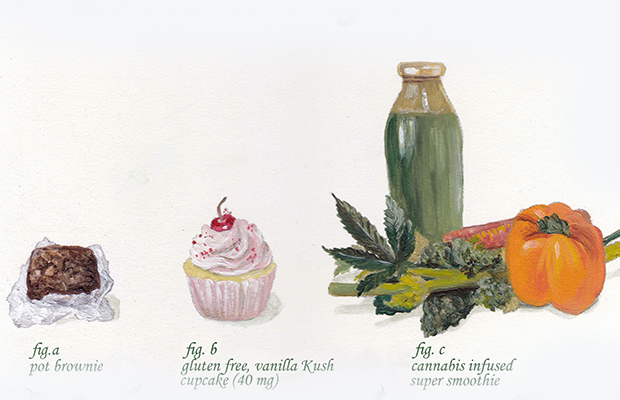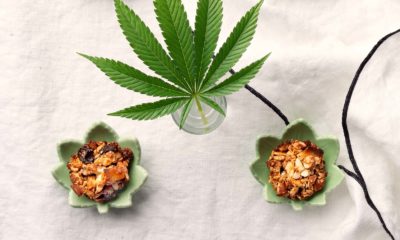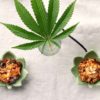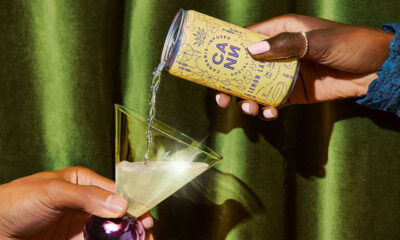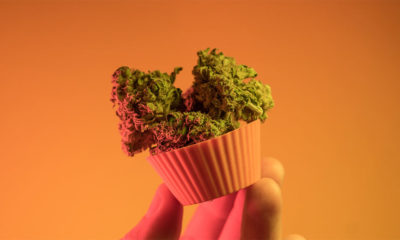The Evolution of Edibles
From fizzy sodas, gourmet cheesecakes and rich chocolate truffles to pizza sauce, barbeque sauce and infused teas and juices, these are definitely not the edibles of yore.
It wasn’t long ago that the term “edibles” meant only one thing – pot brownies. Aside from getting the consumer unpredictably high, these early edibles were known for their distinct chlorophyll taste accompanied by varying degrees of gritty plant matter. For decades, the very notion of ganja food has conjured up images of carefree hippies wearing tie-dye T-shirts and dancing in the mud. But today, cannabis-infused edibles are a million-dollar industry catering to high-end clientele. And while dosage remains dubious, the products themselves are getting much more sophisticated.
Edibles Mature
Traditionally, edibles have essentially been little more than junk food, containing a substantial amount of empty calories from refined sugar, butter, saturated fat and other highly processed ingredients devoid of nutrition. But over the years, cannabis ingestion methods have developed in tandem with consumers’ evolving health priorities. Vaporizing has become commonplace, testing for contaminants is a standard practice and now cannabis-infused products are being developed with the health-conscious consumer in mind.
The majority of edibles still come in the form of cookies, cakes and candies.
Considering that until just recently, legal edibles have been ostensibly geared toward individuals with medical need, it may seem almost counter-intuitive that edibles are routinely produced using ingredients that are widely known to contribute to diseases and health problems like cancer, diabetes and obesity — to name a few. However, the current evolution of the edibles industry is creating a smorgasbord of choices for cannabis consumers.
While there are no statistics on the percentage of cannabis consumers that maintain healthy lifestyles, the increase in edibles that are designed to accommodate diets as varied as raw, vegan, organic and paleo is telling. What research does show is that people who smoke pot are less likely to be overweight than people who don’t. However, indulging in typical, sugar-laden edibles will likely have a less advantageous effect.
Edibles are nevertheless a popular choice due to ease of transport and the stealthiness with which they allow one to consume cannabis in public. Likewise, many people choose edibles over other means of consumption because they last longer and don’t have to be consumed as frequently. With pot shops across the nation now offering ganja-infused options — including raw/vegan energy balls and drinks, granola bars and gluten-free products — edibles, in a sense, are growing up. Out of this evolution, a fledgling market of superfood edibles is rising.
Edibles Market Expands
In Colorado, Medically Correct, the parent company of Incredibles, recently introduced a superfood bar. The Mikiba features 10 nuts and seeds, including pumpkin and hemp. It’s rich in protein, high in omega-3s and omega-6s and gluten-free. It also claims to be high in both THC and CBD (30mg and 10mg, respectively).
Meanwhile, the product that bills itself as “the world’s healthiest edible” comes out of the state where legalization began. Jambo, a company based in Southern California, hails itself as gluten-free, soy-free, paleo and organic, with no refined sugars. Jambo’s ingredient list reads simply, “cashews, honey, raisins, cacao, almonds, coconut, medical-grade cannabis and Himalayan salt.”
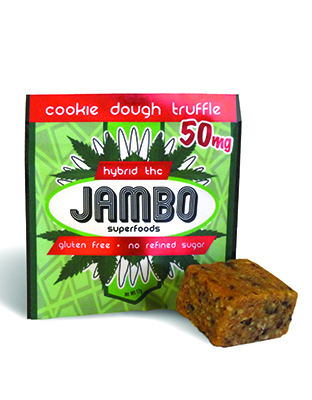
Joseph Winke, CEO of Jambo, was inspired to create his company when he realized the cannabis products he desired weren’t readily available.
“Cannabis was helping with pain, creativity and my spiritual growth, but the container the cannabis was in – brownies, gummy bears and other candies filled with corn syrup and other cheap ingredients – were not part of a healthy, sustainable life plan,” he says. “That’s when I started looking for a gluten-free, paleo edible with no refined sugar made with high-quality ingredients. After realizing nothing existed in the marketplace, I was inspired to create Jambo, the world’s healthiest and most delicious edible.”
Jambo produces an award-winning cookie dough truffle made high in either THC or CBD, as well as cannabis-free versions infused with various superfoods that can either increase energy, like matcha, or enhance relaxation, such as kava. Their THC edible won the San Francisco Medical Cannabis Cup at the beginning of 2014.
Part of what sets Jambo apart among edibles is that instead of using canna-butter in their recipes, the company uses coconut oil infused with cannabis, which Winke says is lab tested with every batch.
“It’s the healthiest way to do the infusion, not requiring any solvents like BHO [butane hash oil],” he adds.
And the ingredient list of superfoods appears to have some synergistic effects with the cannabis oil itself.
“There’s something about how the oils infuse in our organic superfood ingredients which results in a more developed high. In my experience, if I take just the oil, the onset is much more pronounced and comes on stronger. When taking the Jambo truffle, it’s a smoother ramp-up with a more gradual dosing/experiential curve. This tends to be much more enjoyable than just the oil alone.”
While edibles are commonly made from whatever trim is available, Winke says his company, which sources much of its trim from its collective of organic cultivators, uses the same hybrid strain in all of Jambo’s recipes.
“We don’t mix a hodgepodge of strains together. We know how important consistency is when it comes to edibles. That’s why every Jambo weighs the same and has the exact amount of THC as on its label.”
The trend of combining cannabis with superfoods means consumers no longer have to sacrifice nutrition and good health for highness, addressing a niche market that has been ignored until very recently. Winke says Jambo’s customers are people who are “conscious about the type of food they put into their body. They tend to be successful, eat healthy, enjoy what they do, work out and do yoga.”
Edibles Go Highbrow
In addition to this shift toward healthier infused foods, edibles are evolving into simply tastier treats. Edibles that once turned people off due to the strong flavor of traditional canna-butter made from leaf material can now be made without the gritty, chlorophyll taste. And with the advent of concentrated hash oil, it’s possible to produce edibles that are much more palatable to those unwilling to sacrifice flavor for effect.
According to Patients Care Collective in Berkeley, Calif., substituting concentrates for leaf also lends to a more energetic, cerebral high, as opposed to the sedative body stone created by edibles made with leaf material. However, the safety of ingesting certain concentrates, namely those made with solvents like BHO, remains a topic of debate in the cannabis world.
Perhaps most notably in this edibles evolution, is that the products themselves aren’t the only part of the equation that’s changing. Thanks to recreational legalization, so are the clientele. Edible culture is becoming highbrow, evolving to meet the expanded demographic that legalization has exposed to pot products. In Colorado, where edibles account for almost half of the state’s canna-business, catered pot parties just may become the new wine and cheese mixers.
Edible Events, a company that hosts pot parties catered to sophisticated clientele, is at the forefront of the trend to appeal to a more refined crowd. They provide food and wine while guests bring their own cannabis-infused edibles and smokeables to indulge in rotating high-end settings.
The first Edible Events soiree, billed as a blend of Denver’s “culinary, cannabis and art scenes,” sold out at $125 per ticket and event planner Jane West intends to host these affairs monthly in posh venues around the city.
The idea of successful adults at retiring age jumping on the edibles bandwagon seems to lend an air of legitimacy to what has previously been part of an underground, oft-maligned culture. But to many, it’s not a question of being legitimized in the eyes of the mainstream, but about catering to a market that the broader recreational market has traditionally overlooked.
“There is a neglected market of people who want a non-toxic, non-hangover-inducing high that leaves them stronger after than before, unlike alcohol,” Jambo’s Winke imparts.
And by tapping into this market, edible makers are supplying that demand in ways that both address the desire for recreational indulgence and fulfill the consumer need for healthy edible alternatives.
Originally published in issue 14 of Cannabis Now. LEARN MORE.



